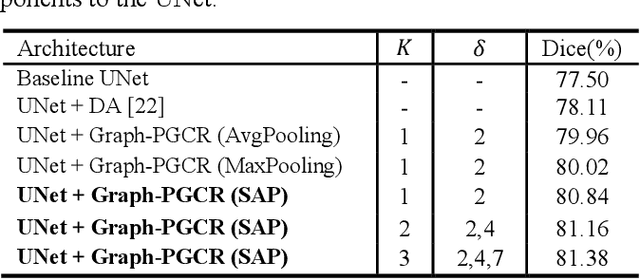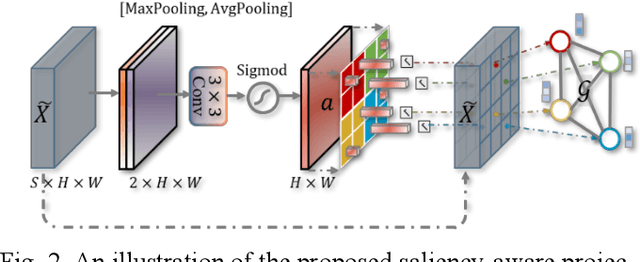Jianying Zhou
Boosting Gradient Leakage Attacks: Data Reconstruction in Realistic FL Settings
Jun 10, 2025Abstract:Federated learning (FL) enables collaborative model training among multiple clients without the need to expose raw data. Its ability to safeguard privacy, at the heart of FL, has recently been a hot-button debate topic. To elaborate, several studies have introduced a type of attacks known as gradient leakage attacks (GLAs), which exploit the gradients shared during training to reconstruct clients' raw data. On the flip side, some literature, however, contends no substantial privacy risk in practical FL environments due to the effectiveness of such GLAs being limited to overly relaxed conditions, such as small batch sizes and knowledge of clients' data distributions. This paper bridges this critical gap by empirically demonstrating that clients' data can still be effectively reconstructed, even within realistic FL environments. Upon revisiting GLAs, we recognize that their performance failures stem from their inability to handle the gradient matching problem. To alleviate the performance bottlenecks identified above, we develop FedLeak, which introduces two novel techniques, partial gradient matching and gradient regularization. Moreover, to evaluate the performance of FedLeak in real-world FL environments, we formulate a practical evaluation protocol grounded in a thorough review of extensive FL literature and industry practices. Under this protocol, FedLeak can still achieve high-fidelity data reconstruction, thereby underscoring the significant vulnerability in FL systems and the urgent need for more effective defense methods.
Generative AI for Internet of Things Security: Challenges and Opportunities
Feb 13, 2025Abstract:As Generative AI (GenAI) continues to gain prominence and utility across various sectors, their integration into the realm of Internet of Things (IoT) security evolves rapidly. This work delves into an examination of the state-of-the-art literature and practical applications on how GenAI could improve and be applied in the security landscape of IoT. Our investigation aims to map the current state of GenAI implementation within IoT security, exploring their potential to fortify security measures further. Through the compilation, synthesis, and analysis of the latest advancements in GenAI technologies applied to IoT, this paper not only introduces fresh insights into the field, but also lays the groundwork for future research directions. It explains the prevailing challenges within IoT security, discusses the effectiveness of GenAI in addressing these issues, and identifies significant research gaps through MITRE Mitigations. Accompanied with three case studies, we provide a comprehensive overview of the progress and future prospects of GenAI applications in IoT security. This study serves as a foundational resource to improve IoT security through the innovative application of GenAI, thus contributing to the broader discourse on IoT security and technology integration.
Inhomogeneous illuminated image enhancement under extremely low visibility condition
Apr 26, 2024



Abstract:Imaging through fog significantly impacts fields such as object detection and recognition. In conditions of extremely low visibility, essential image information can be obscured, rendering standard extraction methods ineffective. Traditional digital processing techniques, such as histogram stretching, aim to mitigate fog effects by enhancing object light contrast diminished by atmospheric scattering. However, these methods often experience reduce effectiveness under inhomogeneous illumination. This paper introduces a novel approach that adaptively filters background illumination under extremely low visibility and preserve only the essential signal information. Additionally, we employ a visual optimization strategy based on image gradients to eliminate grayscale banding. Finally, the image is transformed to achieve high contrast and maintain fidelity to the original information through maximum histogram equalization. Our proposed method significantly enhances signal clarity in conditions of extremely low visibility and outperforms existing algorithms.
Harnessing Optical Imaging Limit through Atmospheric Scattering Media
Apr 23, 2024



Abstract:Recording and identifying faint objects through atmospheric scattering media by an optical system are fundamentally interesting and technologically important. In this work, we introduce a comprehensive model that incorporates contributions from target characteristics, atmospheric effects, imaging system, digital processing, and visual perception to assess the ultimate perceptible limit of geometrical imaging, specifically the angular resolution at the boundary of visible distance. The model allows to reevaluate the effectiveness of conventional imaging recording, processing, and perception and to analyze the limiting factors that constrain image recognition capabilities in atmospheric media. The simulations were compared with the experimental results measured in a fog chamber and outdoor settings. The results reveal general good agreement between analysis and experimental, pointing out the way to harnessing the physical limit for optical imaging in scattering media. An immediate application of the study is the extension of the image range by an amount of 1.2 times with noise reduction via multi-frame averaging, hence greatly enhancing the capability of optical imaging in the atmosphere.
PAGE: Equilibrate Personalization and Generalization in Federated Learning
Oct 13, 2023Abstract:Federated learning (FL) is becoming a major driving force behind machine learning as a service, where customers (clients) collaboratively benefit from shared local updates under the orchestration of the service provider (server). Representing clients' current demands and the server's future demand, local model personalization and global model generalization are separately investigated, as the ill-effects of data heterogeneity enforce the community to focus on one over the other. However, these two seemingly competing goals are of equal importance rather than black and white issues, and should be achieved simultaneously. In this paper, we propose the first algorithm to balance personalization and generalization on top of game theory, dubbed PAGE, which reshapes FL as a co-opetition game between clients and the server. To explore the equilibrium, PAGE further formulates the game as Markov decision processes, and leverages the reinforcement learning algorithm, which simplifies the solving complexity. Extensive experiments on four widespread datasets show that PAGE outperforms state-of-the-art FL baselines in terms of global and local prediction accuracy simultaneously, and the accuracy can be improved by up to 35.20% and 39.91%, respectively. In addition, biased variants of PAGE imply promising adaptiveness to demand shifts in practice.
Graph-based Pyramid Global Context Reasoning with a Saliency-aware Projection for COVID-19 Lung Infections Segmentation
Mar 07, 2021



Abstract:Coronavirus Disease 2019 (COVID-19) has rapidly spread in 2020, emerging a mass of studies for lung infection segmentation from CT images. Though many methods have been proposed for this issue, it is a challenging task because of infections of various size appearing in different lobe zones. To tackle these issues, we propose a Graph-based Pyramid Global Context Reasoning (Graph-PGCR) module, which is capable of modeling long-range dependencies among disjoint infections as well as adapt size variation. We first incorporate graph convolution to exploit long-term contextual information from multiple lobe zones. Different from previous average pooling or maximum object probability, we propose a saliency-aware projection mechanism to pick up infection-related pixels as a set of graph nodes. After graph reasoning, the relation-aware features are reversed back to the original coordinate space for the down-stream tasks. We further construct multiple graphs with different sampling rates to handle the size variation problem. To this end, distinct multi-scale long-range contextual patterns can be captured. Our Graph-PGCR module is plug-and-play, which can be integrated into any architecture to improve its performance. Experiments demonstrated that the proposed method consistently boost the performance of state-of-the-art backbone architectures on both of public and our private COVID-19 datasets.
 Add to Chrome
Add to Chrome Add to Firefox
Add to Firefox Add to Edge
Add to Edge